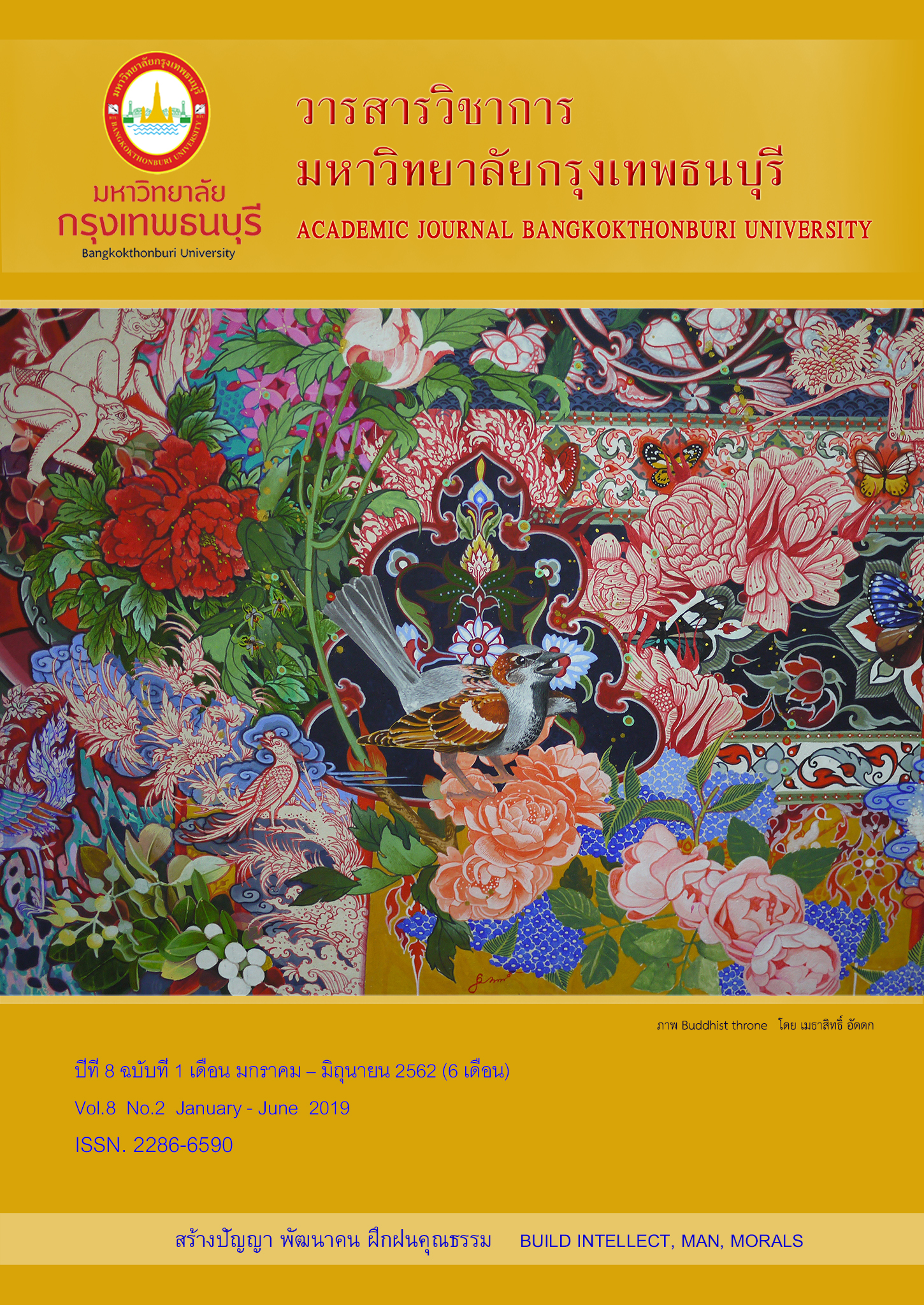การศึกษาความซื่อตรงทางการศึกษาของนักศึกษาระดับปริญญาตรี
Main Article Content
บทคัดย่อ
บทคัดย่อ
การวิจัยนี้มีวัตถุประสงค์เพื่อศึกษาความหมายและองค์ประกอบความซื่อตรงทางการศึกษาของนักศึกษาระดับปริญญาตรี โดยมีกลุ่มตัวอย่าง 2 กลุ่มคือ 1) กลุ่มผู้ให้ข้อมูล ได้แก่ กลุ่มผู้บริหาร อาจารย์ และนักศึกษา จาก 3 สถาบันอุดมศึกษา 2) กลุ่มตัวอย่างในการศึกษาเชิงปริมาณ ได้แก่ นักศึกษาชั้นปีที่ 1-4 ใน 3 สถาบันอุดมศึกษา จำนวน 644 คน ซึ่งได้มาโดยวิธีการสุ่มแบบแบ่งชั้น มีการศึกษา 2 ขั้นตอน คือ 1) การอภิปรายกลุ่ม (Group Discussion) เพื่อให้ได้ความหมายและองค์ประกอบความซื่อตรงทางการศึกษา และ 2) การศึกษาเชิงปริมาณเพื่อวิเคราะห์องค์ประกอบความซื่อตรงทางการศึกษาของนักศึกษาระดับปริญญาตรี เครื่องมือที่ใช้ในการเก็บรวบรวมข้อมูลคือ แบบวัดความซื่อตรงทางการศึกษาของนักศึกษาระดับปริญญาตรี โดยมีค่าความเชื่อมั่นทั้งฉบับเท่ากับ .89 สถิติที่ใช้ในการวิเคราะห์ข้อมูลคือ การวิเคราะห์องค์ประกอบเชิงยืนยัน
ผลการวิจัยพบว่า โมเดลการวิเคราะห์ความซื่อตรงทางการศึกษาของนักศึกษาระดับปริญญาตรี มีความสอดคล้องกับข้อมูลเชิงประจักษ์ (x2 = 62.69, df = 48, p = .07, GFI = .98, AGFI = .97, RMSEA = .02, SRMR = .02) โดยมีค่าน้ำหนักองค์ประกอบมาตรฐานอยู่ระหว่าง .97 - .99 ทุกองค์ประกอบมีนัยสำคัญทางสถิติที่ระดับ .01 และมีค่าความเชื่อมั่นเชิงโครงสร้างอยู่ระหว่าง .94 - .99 แสดงว่า โมเดลการวัดความซื่อตรงทางการศึกษาที่สร้างขึ้นสามารถนำมาอธิบายความซื่อตรงทางการศึกษาได้ โดยสามารถเรียงลำดับค่าน้ำหนักองค์ประกอบจากสูงสุดได้ดังนี้ ค่านิยมทางสังคม ค่านิยมทางศีลธรรม และคุณลักษณะส่วนบุคคล ตามลำดับ
Article Details
References
Arhin, A. (2009). A pilot study of nursing student’s perceptions of academic dishonesty: A Generation Y perspective. ABNF Journal, 20(1), 17-21
Baetz, Mark ; et al. (2011). Encouraging Active Classroom Discussion of Academic Integrity and Misconduct in Higher Education Business Contexts. Journal of Academic Ethics. (9), 217-234
Barnard, A., Schurink, W., & Beer, M. D. (2008). A Conceptual Framework of Integrity. South African Journal of Industrial Psychology, 34(2), 40-49
Becker, T. E. (1998, January). Integrity in organizations: Beyond honesty and conscientiousness. Academy of Management. The Academy of Management Review, 23(1), 154-160
Chaiyun Sakulsriprasert. (2013). Confirmatory Factor Analysis. Journal of Clinical Psychology, 44(1), 1-16
Cloud, H. (2006). Integrity; The courage to meet the demands of reality. UK: Harper Collins Books.
Dunn, C. P. (2009). Integrity Matters. International Journal of Leadership Studies. 5 (2), 102-125
International Center for Academic Integrity, (ICAI). (2013). Fundamental Values of Academic Integrity. 2nd ed. Retrieved from https://academicintegrity.org/wp-content/uploads/2017/12/Fundamental-Values-2014.pdf
King Prajadhipok’s Institute. (2011). Research and Development for Enhancement for Integrity in Thailand. Retrieved October 5, 2015, from http://kpi.ac.th/media/pdf/M8_269.pdf.
Mastin, D. F., Peska, J., & Lilly, D. R. (2009). Online Academic Integrity. Teaching of Psychology, 36(3), 174-178
Nonis, S., & Swift, C. O. (2001, November/December). An examination of the relationship between academic dishonesty and workplace dishonesty: a multicampus investigation. Journal of Education for Business, 77(2), 69-77
Poonpong Suksawang. (2013). Structural equation modeling. (1st Edition). Bangkok: Watana Phanit Press.
Suthiti Khattiya & Wilailuk Suwajittanon. (2011). Research Design and Statistics. (2nd Edition). Bangkok: Prayunrawong Printing.
Texas Tech University. (2010, June). McCabe Academic Integrity Survey Report. Texas Tech University. Retrieved from http ://www.depts.ttu.edu/provost/qep/docs/McMabe+Academic_integrity_ Report_Cover.pdf
Yut Kraiwan. (2013). Multivariate ststistical analysis for research. 1st Edition. Bangkok: Chulalongkorn University Press.

